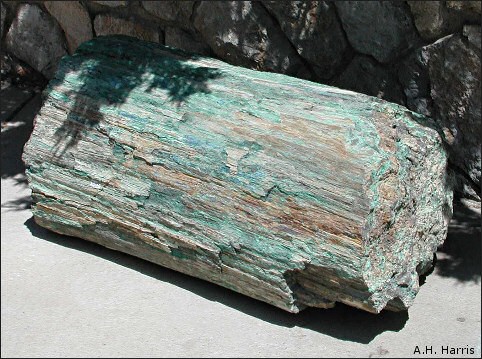

When people think of fossils, things like dinosaurs and seashells often are what come to mind. However, many other things fossilize when conditions are right. The famous white cliffs of Dover are made up largely of the calcium-containing skeletons of microscopic organisms, and a number of deposits of diatomite, made up of the siliceous skeletons of diatoms, are commercially mined. Of course, those are largely marine creatures, but our own desert has its share of fossils worth crowing about.
One such fairly common fossil hereabouts is petrified wood, preserved
in place or carried from the north by the Rio Grande. Thanks to decay-resistant cell
walls surrounding the living cells of plants, wood fossilizes readily under the right
conditions. One of the more spectacular types of fossils occurs when ground water
carries silica and other minerals to buried tree parts. In the best preservation, the
tree trunk is replaced by silica, molecule by molecule, preserving fine structures such
as cell walls and growth rings. And if the water carries traces of colorful minerals,
the once-wood becomes a thing of beauty.

Contributor: Arthur H. Harris, Laboratory for Environmental Biology, Centennial Museum, University of Texas at El Paso.
Desert Diary is a joint production of the Centennial Museum and KTEP National Public Radio at the University of Texas at El Paso.

A segment of a large petrified log on display in front of the Geological Sciences Building, University of Texas at El Paso. The coloration is due largely to copper compounds. Photograph by A.H. Harris.